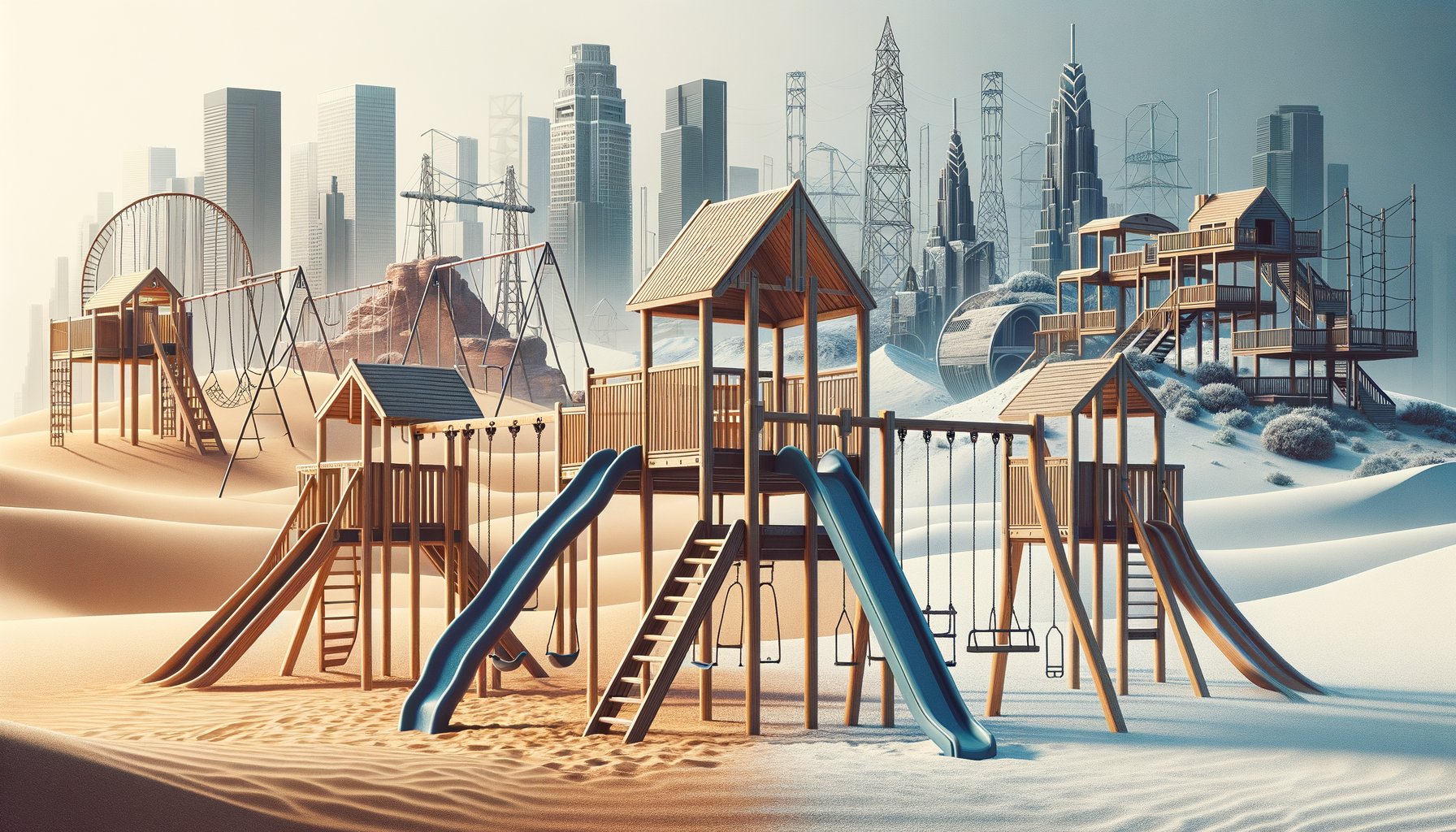
Exceptional Quality Playground Structures for Every Environment
Introduction to Durable Playground Apparatus
Playgrounds are essential spaces for children’s development, providing a safe environment for physical activity, social interaction, and imaginative play. The durability of playground apparatus is crucial to ensure that these spaces remain safe and enjoyable over time. Investing in quality playground structures not only enhances the play experience but also ensures longevity and safety, reducing the need for frequent repairs and replacements.
In this article, we will explore the elements that contribute to the longevity of playground equipment, the materials used in their construction, and how they cater to different environments. We’ll also discuss the importance of safety standards and maintenance practices that keep playgrounds in top condition.
Materials That Stand the Test of Time
When it comes to building playground apparatus that lasts, the choice of materials is paramount. Modern playground structures are often constructed from a combination of materials that offer both durability and aesthetic appeal.
Common materials include:
- Steel: Known for its strength and resistance to harsh weather conditions, steel is a popular choice for structural components.
- Recycled Plastics: Eco-friendly and resistant to rot, these materials are increasingly used for components like slides and platforms.
- Wood: Treated wood offers a natural look and feel, though it requires regular maintenance to prevent decay.
Each material has its advantages, and the choice often depends on the specific needs of the playground, such as the local climate and the desired aesthetic. For instance, coastal areas might favor materials that resist salt corrosion, while urban environments may prioritize vandal-resistant options.
Designing for Different Environments
Playgrounds are not one-size-fits-all, and the environment plays a significant role in determining the appropriate design and materials. Urban playgrounds often face challenges such as limited space and the need for vandal-resistant materials, while rural playgrounds may focus more on blending with natural surroundings.
Considerations for different environments include:
- Urban Settings: Compact designs with multi-level structures maximize space, and materials like steel and high-density polyethylene offer durability and ease of maintenance.
- Rural Areas: Natural materials like wood and stone can enhance the aesthetic, but require treatments to withstand weather conditions.
- Coastal Regions: Corrosion-resistant materials are essential to combat the effects of saltwater and humidity.
By tailoring playground designs to their environment, communities can ensure that these spaces remain welcoming and safe for years to come.
Safety Standards and Regulations
Safety is a top priority in playground design, and adherence to safety standards and regulations is crucial. These guidelines ensure that playgrounds are safe for children of all ages and abilities.
Key safety standards include:
- Surface Materials: Impact-absorbing surfaces like rubber mulch or mats reduce injury risks from falls.
- Equipment Spacing: Adequate spacing between apparatus prevents overcrowding and accidents.
- Age Appropriateness: Equipment should be designed to cater to different age groups, with appropriate challenges and safety features.
Regular inspections and maintenance are also vital to ensure that playgrounds remain compliant with safety standards. This includes checking for wear and tear, ensuring all components are secure, and replacing damaged parts promptly.
Maintenance Practices for Longevity
Even the most durable playground structures require regular maintenance to ensure their longevity and safety. A proactive maintenance schedule can prevent minor issues from becoming major problems.
Effective maintenance practices include:
- Regular Inspections: Conducting routine checks for signs of wear, rust, or damage.
- Cleaning: Regular cleaning to remove dirt, debris, and potential hazards like broken glass.
- Repairs: Promptly addressing any issues such as loose bolts or damaged surfaces.
By investing in regular maintenance, playground operators can extend the life of their equipment, ensuring that it remains a safe and enjoyable space for children to play.
Conclusion: Investing in Quality for Future Generations
Durable playground apparatus is an investment in the future of our communities. By choosing quality materials, adhering to safety standards, and committing to regular maintenance, we can create playgrounds that are safe, engaging, and long-lasting. These spaces not only provide children with the opportunity to play and learn but also contribute to the overall well-being and cohesion of our communities.
As we continue to prioritize the development of resilient playgrounds, we ensure that future generations have access to spaces that support their growth and development. In doing so, we lay the foundation for healthier, happier communities.

